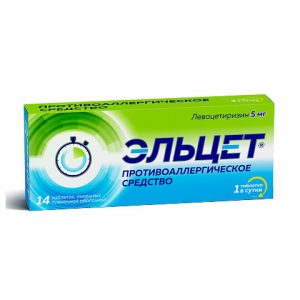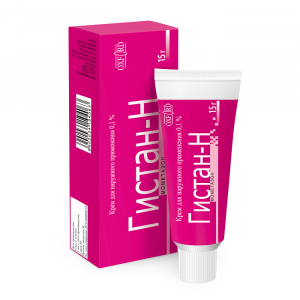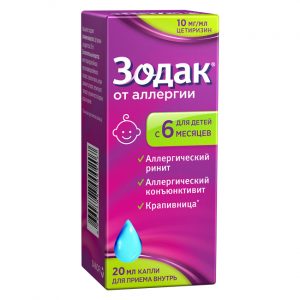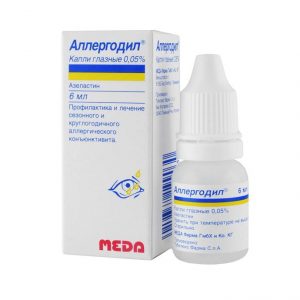Description
Pharmacological action of
corticosteroids intranasal use.
It has anti-inflammatory and anti-allergic effects.
The mechanism of antiallergic and anti-inflammatory action is due to the ability to inhibit the release of inflammatory mediators. Increases the production of lipomodulin, which is an inhibitor of phospholipase A, which leads to a decrease in the release of arachidonic acid and, accordingly, inhibition of the synthesis of arachidonic acid metabolism products – cyclic endoperoxides, prostaglandins.
Prevents marginal accumulation of neutrophils, which reduces inflammatory exudate and lymphokine production, inhibits macrophage migration, and reduces the rate of infiltration and granulation.
Reduces inflammation by reducing the formation of chemotaxis substance (effect on late allergy reactions), inhibits the development of an immediate allergic reaction (due to inhibition of the production of arachidonic acid metabolites and a decrease in the release of inflammatory mediators from mast cells).
In vitro mometasone furoate significantly inhibits the release of leukotrienes from leukocytes. In mometasone cell cultures, furoate has shown a high ability to inhibit the synthesis and release of IL-1, IL-5, IL-6, as well as TNF it is also an inhibitor of the production of leukotrienes, as well as an extremely powerful inhibitor of Th2 cytokines, IL-4 and IL-5, CD4 + human T cells.
When tested in preclinical models, mometasone reduced the accumulation of inflammatory cells (including eosinophils), was introduced into the walls of the upper and lower respiratory tract, and also improved lung function after a provocative test. Mometazone reduced the number of lymphocytes and the concentration of mRNA of the cytokines IL-4 and IL-5.
In studies with provocative tests using antigens on the nasal mucosa, high anti-inflammatory activity of mometasone was demonstrated both in the early and late stages of an allergic reaction.
This was confirmed by a decrease (compared with placebo) in histamine levels and eosinophil activity, as well as a decrease (compared with the initial level) in the number of eosinophils, neutrophils and epithelial cell adhesion proteins.
Pharmacokinetics.
After intranasal administration, the systemic bioavailability of mometasone is low, in particular due to low absorption and significant presystemic metabolism when ingested mometasone.
When used in recommended doses, the plasma concentration of mometasone is near or below the detection threshold (50 pg / ml). As a consequence, it is impossible to determine either T1 / 2 or Vd of mometasone after inhalation. It is excreted in urine and bile.
Indications
For intranasal use:
treatment of seasonal and perennial allergic rhinitis in adults, adolescents and children from 2 years old
acute sinusitis or exacerbation of chronic sinusitis in adults (including elderly people) and adolescents from 12 years old (as an auxiliary therapeutic agent for antibiotic treatment)
acute rhinosinusitis with mild to moderate symptoms without signs of severe bacterial infection in patients aged 12 years and older
prevention of seasonal allergic rhinitis of moderate to severe in adults and adolescents from 12 years old
nasal polyposis, accompanied by impaired nasal breathing and olfaction in adults.
Pregnancy and lactation
Adequate and well-controlled studies of the use of mometasone during pregnancy have not been conducted. It is not known whether mometasone with breast milk is excreted.
Intranasal use of mometasone during pregnancy and during breastfeeding is possible only if if the intended benefit to the mother outweighs the potential risk to the fetus or infant.
Newborns whose mothers received corticosteroids during pregnancy should be observed to identify possible symptoms of adrenal cortical insufficiency.
Special instructions
Caution is advised to use mometasone for tuberculosis infection (active or latent) of the respiratory tract, untreated fungal, bacterial, a systemic viral infection or an infection caused by Herpes simplex with eye damage (as an exception, it is possible to prescribe the drug with the listed infections as directed by a doctor), the presence of untreated local infection involving the nasal mucosa.
With prolonged intranasal use of mometasone, a periodic examination of the nasal mucosa by an ENT doctor is necessary. With the development of a local bacterial or fungal infection of the nose or pharynx, treatment is recommended to be discontinued and special treatment initiated.
Persistent irritation of the mucous membrane of the nasal cavity and pharynx is an indication for drug withdrawal.
When switching from corticosteroids for systemic use to intranasal use of mometasone, special care is required because of the possible risk of developing adrenal insufficiency. After the cancellation of systemic corticosteroids, it takes several months to restore the function of the hypothalamic-pituitary-adrenal system.
During stressful situations, including injuries, surgical interventions, infectious diseases or a severe attack of bronchial asthma, patients who previously received GCS for systemic use require additional prescription of a short course of systemic GCS, which then gradually disappear as the symptoms subside.
When switching from systemic corticosteroids, intranasal use of mometasone may cause concomitant allergic diseases, symptoms of which were previously suppressed by the use of systemic corticosteroids.
During this period, some patients may show signs of cancellation of systemic corticosteroids, including pain in the muscles and / or joints, depression, a feeling of fatigue, despite the fact that lung function indicators are stable or even improve.
If there are signs of adrenal insufficiency, you should temporarily increase the dose of corticosteroids for systemic use, and subsequently cancel them more smoothly.
Patients receiving corticosteroids or other immunosuppressants should be advised to avoid contact with patients with certain infections (chickenpox, measles) and be sure to consult a doctor if such contact has occurred (especially important when used in adolescents over 12 years of age).
To maintain a low potential for suppressing the hypothalamic-pituitary-adrenal system, the recommended doses should not be exceeded, and the dose of mometasone should be titrated in each patient, achieving the minimum effective.
When using mometasone, it should be borne in mind that the effect on cortisol production may vary in different patients.
The occurrence of candidiasis may require appropriate antifungal therapy or discontinuation of mometasone.
Pediatric use
It is recommended that the growth of adolescents receiving long-term therapy with mometasone be regularly monitored. When growth is slowed down, the therapy should be reviewed in order to reduce the dose of mometasone to the minimum effective dose, which allows controlling the symptoms of the disease.
When conducting placebo-controlled clinical studies in children with intranasal use of mometasone at a dose of 100 mcg / day for a year, growth retardation was not observed.
Composition of
1 dose:
of mometasone furoate monohydrate 0.0517 mg,
which corresponds to the content of mometasone furoate 0.05 m
Excipients:
microcrystalline cellulose and carmellose rcgl srld 2.1 mg (mrd) citric acid monohydrate – 0.2 mg,
sodium citrate dihydrate – 0.28 mg,
polysorbate 80 – 0.01 mg,
benzalkonium chloride – 0.02 mg,
water d / i – up to 100 mg.
Dosage and administration
Dosing regimen is set individually, depending on the indications, the age of the patient, the dosage form used.
Side effects of the
From the respiratory system: with intranasal use, nosebleeds, pharyngitis, burning sensation in the nose, sneezing, irritation of the nasal mucosa are very rare with intranasal application – cases of perforation of the nasal septum.
Other: headache possible.
Terms of delivery from
pharmacies Prescription
dosage form
nasal spray




